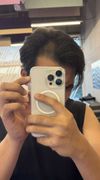community Posting my before and after with longer hair, since a lot of people wanted to see it. Finasteride only. The first two pictures are before starting treatment, and the last two are 8 months in, 1.25mg daily, 24 years old.
A user shared before and after photos of their hair loss treatment using Finasteride. The treatment showed significant improvement after 8 months of daily use.
